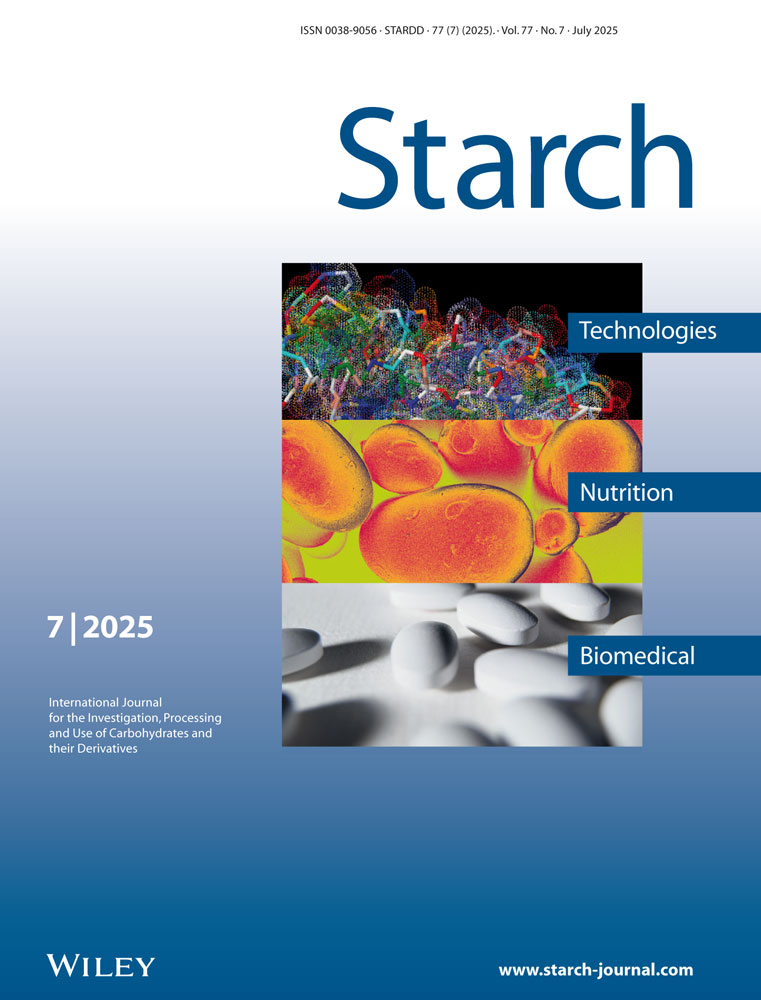Developmental Changes in Properties of Sweet Potato Starches
Abstract
enSweet potato starches extracted from two varieties at different stages of development were investigated for various physicochemical properties. Average granule size increased in the early stage of development. The amylose content calculated from the blue value (BV) remained almost constant. The onset temperature (To) determined by differential scanning calorimetry (DSC) was lowest in the latest stage of development. The heat of gelatinization (ΔH) was lowest in the earliest stage of development. Digestibility by two glucoamylases tendet to be lower in the later stage of development.
Abstract
deEntwicklungsbedingte Veranderungen der Eigenschaften von Süßkartoffelstärken.
Aus zwei Varietäten in verschiedenen Entwicklungsstadien extrahierte Süßkartoffelstärken wurden hinsichtlich verschiedener physikalisch-chemischer Eigenschaften untersucht. Die durchschnittliche Korngröße nahm im ersten Entwicklungsstadium zu. Der aus dem Blauwert (BV) errechnete Amylosegehalt blieb annähernd konstant. Die Anfangs-Verkleisterungstemperatur (To), bestimmt durch Differential-Raster-Calorimetrie (DSC) war am niedrigsten im letzten Entwicklungsstadium. Die Verkleisterungswärme (ΔH) war im ersten Entwicklungsstadium am niedrigsten. Die Abbaubarkeit durch zwei Glucoamylasen zeigte die Tendenz, in den späteren Entwicklungsstadien niedriger zu sein.




